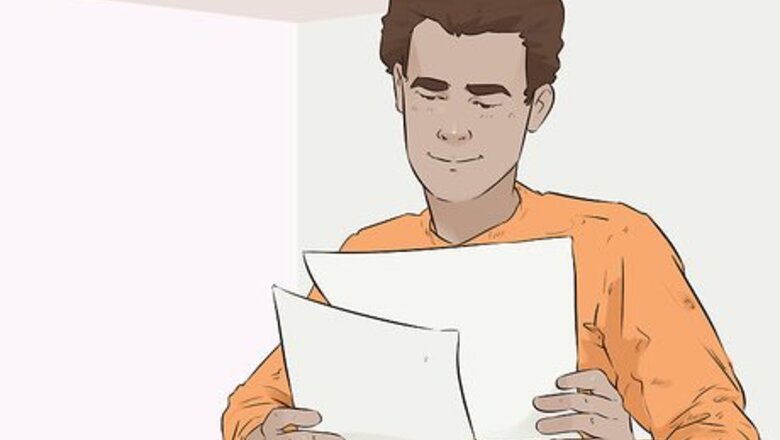
views
Reviewing Your Paragraph
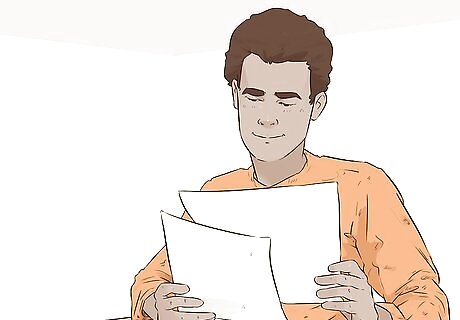
Reread what you’ve written. Read through your paragraph and note what you’ve covered. You can also refer to your outline if you made one. Since your concluding statement should sum up what you’ve said, it’s important to go over those details while you’re writing the closing statement. Focus on what you lay out in the topic sentence. Note your evidence and details.
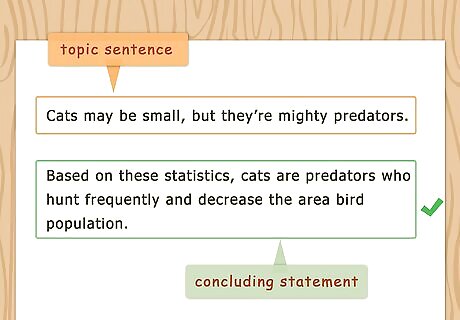
Focus on the main idea. Your concluding statement should reinforce your main idea. This is what you stated in your topic sentence. Make sure that your paragraph sticks to this main idea, and then craft your concluding statement around it. If your topic sentence reads, “Cats may be small, but they’re mighty predators,” then your main idea is that cats are big hunters. Your concluding statement should show how your paragraph supported the idea that cats are big predators. For example, a closing statement might read, “Based on these statistics, cats are predators who hunt frequently and decrease the area bird population.”
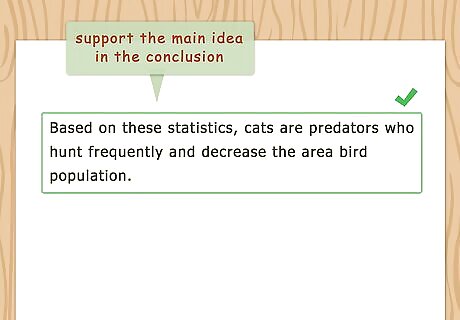
Summarize your ideas. A concluding statement reminds the reader of your main idea and what you’ve just said about it, so it will act as a loose summary of the paragraph. Jot down a brief summary of your paragraph, the use it to draft the sentence(s) you’ll use for your essay. For example, the closing statement above, “Based on these statistics, cats are predators who hunt frequently and decrease the area bird population,” reminds the reader that the paragraph just provided statistics about how often cats hunt and how they impact the local bird population. These details support the main idea, and the writer has mentioned both.
Drafting a Closing Statement

Begin the sentence with a signal word, if desired. Show your reader that you are ending the paragraph by starting the sentence with a transition word that signals the sentence type. This will direct your reader to what they need to understand. Examples of signal words include: Finally Lastly In the end Consequently As a result Overall
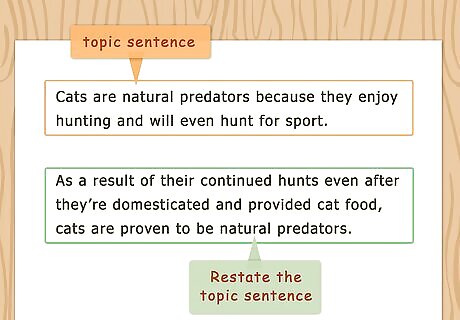
Restate the topic sentence. Look back at your topic sentence. This is your main idea, so it needs to be reflected in the closing statement. However, you shouldn’t just paraphrase what you wrote in the topic sentence. Instead, add what the reader learned about the topic in this paragraph. An example topic sentence might read: “Cats are natural predators because they enjoy hunting and will even hunt for sport.” Your concluding statement for this paragraph might read: “As a result of their continued hunts even after they’re domesticated and provided cat food, cats are proven to be natural predators.”
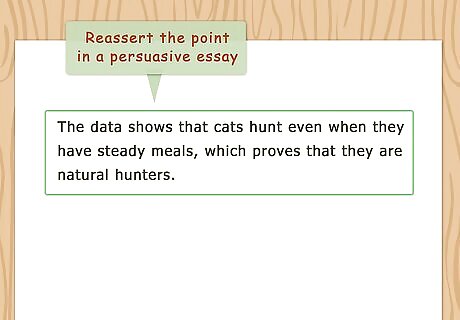
Reassert your point in a persuasive essay. Your concluding statement should reflect the type of paper you’re writing. In a persuasive or argument paper, you should use the closing statement to remind the reader of your stance. As an example, “The data shows that cats hunt even when they have steady meals, which proves that they are natural hunters.”
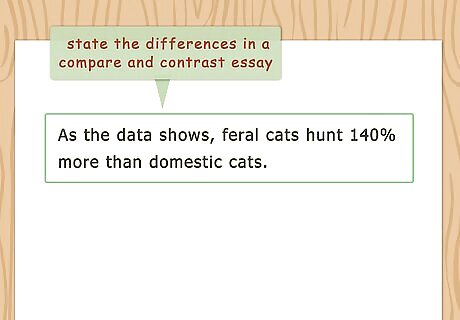
Focus on the similarities and differences in a compare and contrast essay. Your concluding sentence should point out for the reader what you have compared or contrasted in the paragraph, as well as what the reader should take from the information you provided. This will direct your reader back to the purpose of your essay. For example, “As the data shows, feral cats hunt 140% more than domestic cats.”

Show how the facts are related in a cause and effect essay. A cause and effect essay should show how one event leads to or contributes to another. Explain in your concluding sentence how the details you provided in your paragraph support the relationship that your essay is trying to prove. For example, “Consequently, homes that own cats have fewer birds living in their yards.”
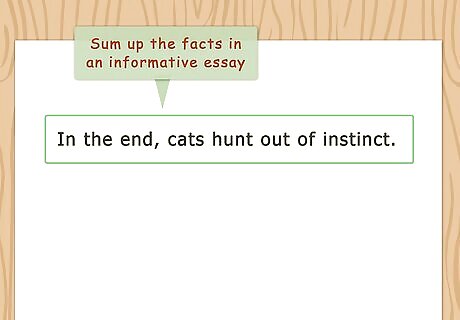
Sum up your facts in an informative essay. If you’re writing to inform your audience, remind them of the facts you’ve provided in the paragraph. You don’t need to list everything you said. All you need is a summary of what it all means. For example, “In the end, cats hunt out of instinct.”
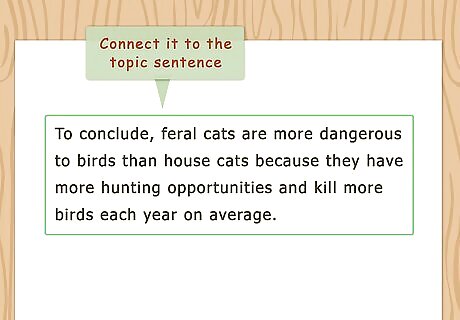
Connect your paragraph details to the topic sentence. Another way to be effective is to show the reader how the evidence or examples you provided in the paragraph link back to the topic sentence. While you should have already done that in the paragraph itself, the concluding statement should cap off what you’ve said. For example, “To conclude, feral cats are more dangerous to birds than house cats because they have more hunting opportunities and kill more birds each year on average.” This sentence supports the main idea that feral cats hunt more than house cats and shows how the two details provided in the sentence link back to the topic sentence.
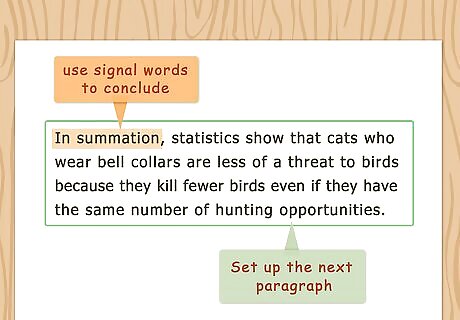
Set up the next paragraph. Use your concluding statement to set up the next paragraph. This does not mean stating that you will be adding another paragraph. It means that you should provide the reader with a smooth transition into the next topic sentence. For example, your closing statement could read, “In summation, statistics show that cats who wear bell collars are less of a threat to birds because they kill fewer birds even if they have the same number of hunting opportunities.” This signals to the reader that the writer has finished with one main idea and is moving onto another in a new paragraph.
Avoiding Common Errors

Avoid using the words “I” or “my” in your closing statement. Many writers are tempted to conclude their paragraphs using statements that begin with “As I have shown” or “This shows my assertions are correct.” Keep your essay in the formal third-person, which will make your ideas more convincing. You also want to avoid the word “you.” For example, don’t say, “As you can see” in your concluding sentence. There are some exceptions, such as if you’re writing an introductory paragraph or an opinion essay.
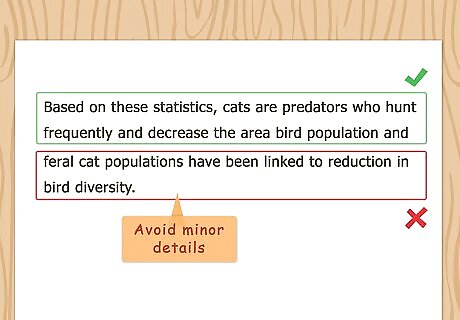
Stay away from minor details. While you want to allude to the evidence or examples you provided, don’t make your concluding sentence about those minor points. Instead, keep it focused on the main idea. Reread your concluding statement, then compare it to your paragraph. Do you reference one detail but not another? If it does, rewrite the sentence to address the main points, not the subpoints.

Write a statement that serves a purpose. Sometimes closing sentences can become formulaic or repetitive. To prevent this, make sure that your main idea comes through and the sentence connects the explanation in the paragraph to that main idea. A poor closing statement might read: “As you can see, the evidence suggests that cats like to hunt." A better closing statement could read: “Based on the data, cats look for opportunities to hunt for sport, proving they are natural predators."

















Comments
0 comment